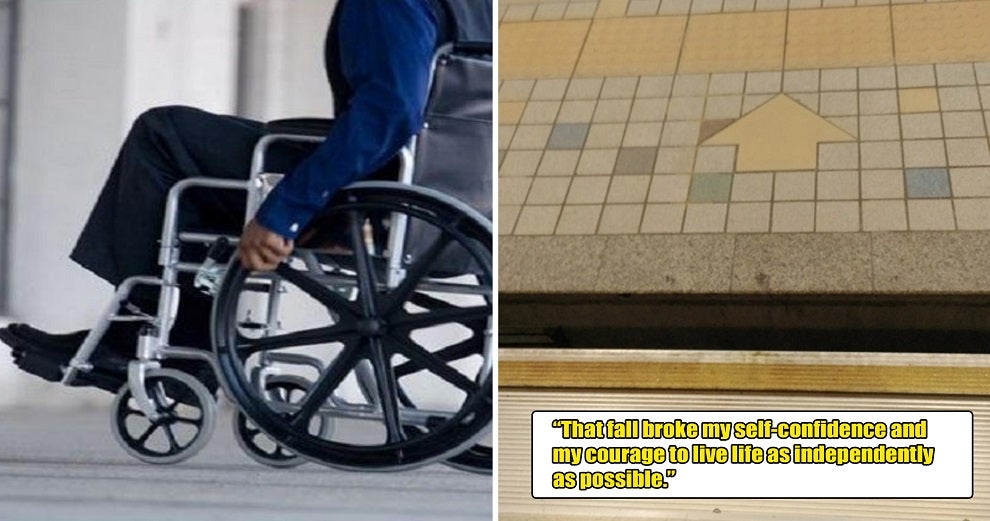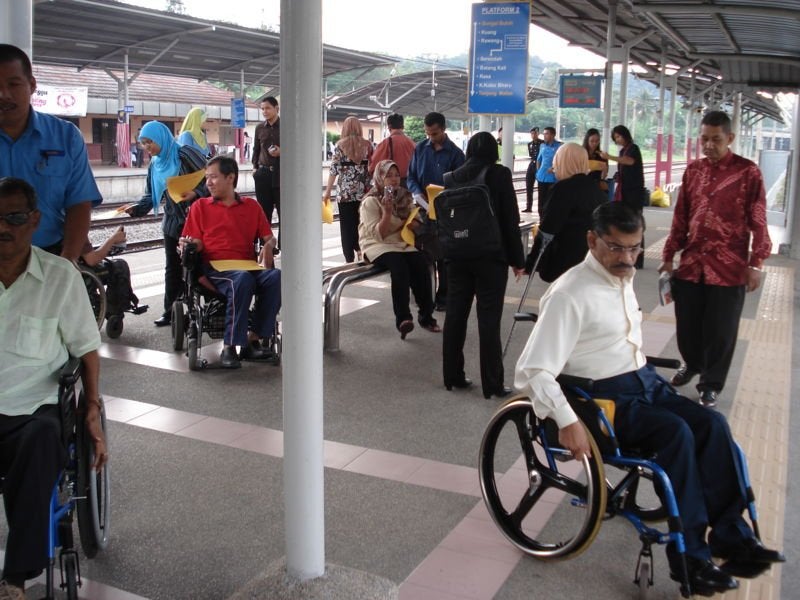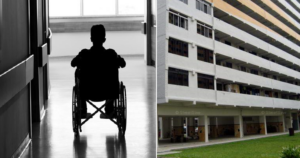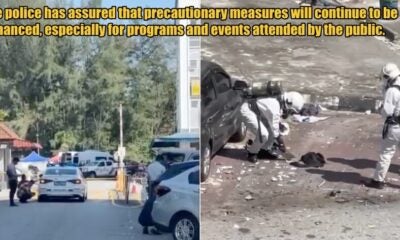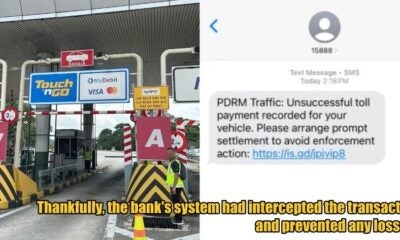Let’s be honest here, there are many facilities and services in Malaysia that frequently consider accessibility to the physically disabled as an afterthought, especially when it comes to public transport.
Think about it, though. How often have able-bodied people considered how those with limited mobility get around, especially in bustling urban areas like KL? As bad as it sounds, most of us don’t really stop to think about issues that don’t directly affect us, which is why the needs of minority groups like people with disabilities are often neglected.
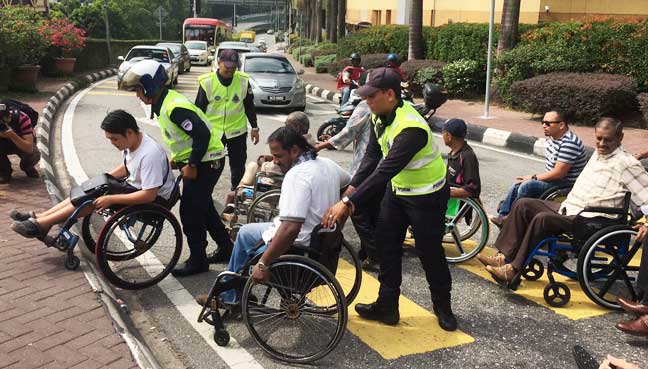
Source: FMT
This issue however, recently got the attention of a number of local netizens after a Malaysian named Peter Tan shared his heartbreaking story in an article on The Borneo Post.
Peter, who works as a workshop facilitator, is wheelchair-bound. He often uses the KLIA Transit to get to the Kuala Lumpur International Airport, where his workshops are held from Mondays to Thursdays. Although it’s the most convenient mode of transport for him to commute to work, he explained that there was one issue he constantly faced while taking the train. An excerpt from his article reads,
“There is a six-inch gap between the train and platform. Other than the gap there are two small kerbs at the entrance of the train that could snag the front casters of my wheelchair.”
“A security personnel member or porter would usually assist me to board or disembark. To cross over, they will have to pop a wheelie and push the wheelchair to cross the gap and avoid the two small kerbs.”
He added that none of the staff who have assisted him have been properly trained to safely handle wheelchairs. This is definitely a hazard because if the wheelie is not done properly, the front casters of his wheelchair could drop into the gap or hit the kerbs, causing Peter to lose his balance.
Due to the staff not being properly trained, this has already happened several times in the past, but he often made lucky escapes thanks to the quick passengers holding him before he could fall. Each time this happened, he would make it a point to report this issue to the duty manager, but no action was ever taken apart from issuing apologies.
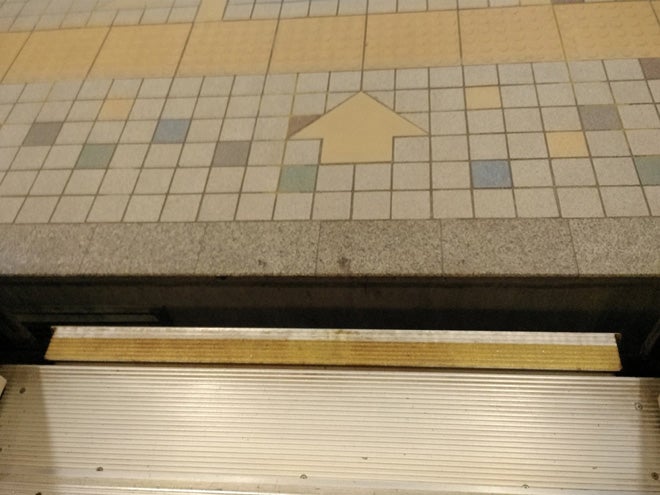
Source: The Borneo Post
However, Peter’s most recent experience on the KLIA Transit was one he found the most unpleasant. He explained,
“On Thursday (29th March), I fell. The casters hit a kerb at the entrance. I was thrown off the wheelchair and flopped onto the floor.”
“The severity of my impairment meant that I could not break my fall to avoid serious injuries. As I lay there on the floor, I wondered if any of my bones were broken.”
“It took three persons with great effort to get me back onto the wheelchair. I was not sure if I was injured, except for an aching knee, as I have very little sensation from my chest down.”
Despite having a fall, Peter continued his journey to KLIA because no one could replace him at work on such short notice.
“As I sat there collecting my thoughts, I cried. I did not cry even when the doctor told me I have end stage renal failure. I did not cry when I was told I have to go on dialysis for the rest of my life. But I cried that morning. I cried because life was such a struggle every day when taking the train.”
“That fall broke my self-confidence. That fall broke my spirit. That fall broke my courage to live life as independently as possible.”
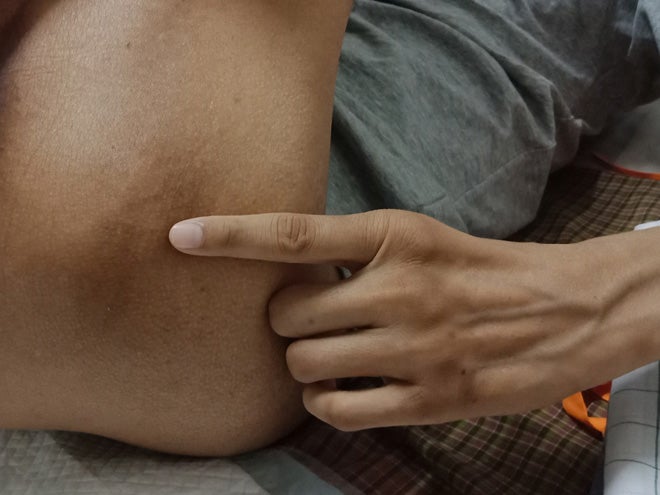
Source: The Borneo Post
“That fall broke the dam that was holding back all my fears. After three months of putting on a brave front, I finally broke.”
Peter shared his ordeal on Facebook, after which he received a message from the top management of ERL who wanted to meet with him. This came after two months of inaction and silence. He criticised the way this issue was handled and that these corporations fail to take safety issues seriously, saying,
“This apathy and complacency to safety issues is prevalent in Malaysia. Complaints are repeatedly ignored until something major happens or it goes viral on social media.”
“Then they scramble to do damage control to repair the negative publicity rather than out of genuine concern. These are human lives we are talking about but they are often taken lightly or not at all.”
Later that day after his fall, Peter said that his wife checked his body for any signs of physical injuries and found a large bruise on his left hip. He added that both of his knees ached, but had no swelling. However, he said that physical injuries are only temporary, while his mental health would take a while to recover.
“The physical injuries will heal in time, I guess. But my self-confidence in my ability to move about freely and safely will take a longer time to recover.”
Indeed, many able-bodied people often fail to realise just how much of an impact accessibility has on the quality of life of those with limited mobility. It can greatly affect their ability to be independent and feel safe. By the looks of recent statistics, it looks like Malaysia definitely has quite a way to go when it comes to making our cities accessible for everyone.
According to the New Straits Times, Kuala Lumpur ranked 94th among the world’s most sustainable cities for transport in the 2017 Sustainable Cities Mobility Index, scoring 63 per cent for wheelchair access.
Meanwhile, James Speirs, a South African urban planner currently based in Kuala Lumpur, recently told The Star that the city seems to be giving more importance to motorists and pointed out the inconsistencies KL has in its urban planning, saying,
“I have seen tactile paving that leads up to a zinc fencing, a wheelchair ramp that slides straight into a concrete pillar and steel fencing that goes nowhere.”
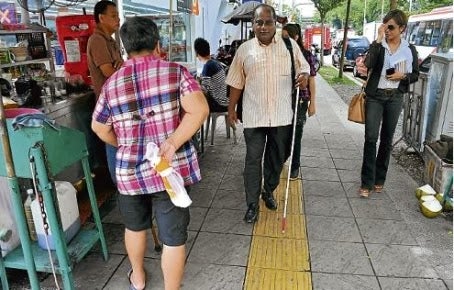
Source: Blog Buruk | Blogspot
He added that KL seems to be using high-tech solutions to solving low-tech problems, saying,
“In the city, especially a township like Brickfields, you have escalators, lifts and bridges to move pedestrians when all that it actually needs is traffic lights.”
“In Cape Town, South Africa, the city uses audible traffic lights for the visually-impaired to cross the road and they are perfectly safe. That is one of the benefits of low-tech solution designs; we focus on mobility issues, making sure it is wheelchair-friendly, easy for parents with babies in prams as well as for cyclists.”
Let’s hope that the relevant authorities and governing bodies take the stories of people like Peter more seriously, and do better to make sure KL is a city that can be safe and accessible for everyone.
Read Peter’s full story here.
Also read: Wheelchair-bound Man Trapped in Flat by Drug Addict Friend, Falls to Death While Escaping

